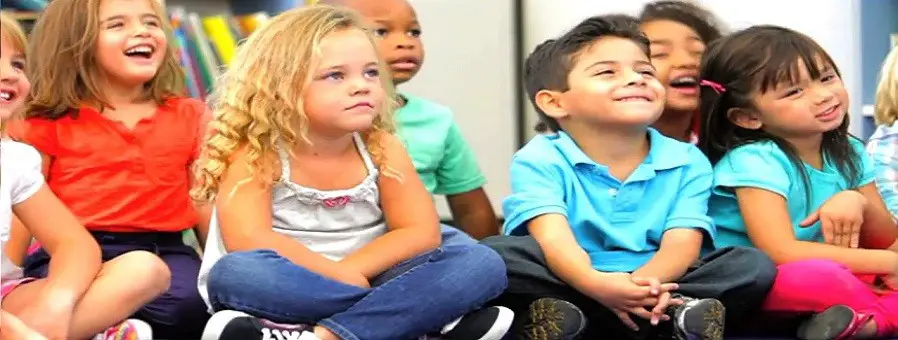Last Updated on August 23, 2022 by Emma White
According to the UNESCO Institute of Statistics, one-third of kids around the globe deal with bullying. Bullying can happen to anyone at any age, and it can be heartbreaking for a mother to find out her child is a victim. Fortunately, there are numerous ways parents can help their children prevent and combat bullying.
Learn more about bullying among children, including the short-term and long-term effects, as well as how you can help.
The Definition of Bullying
Bullying can take numerous forms, including physical bullying, emotional bullying and online bullying, also known as cyberbullying. The Centers for Disease Control and the Department of Education released the first official definition of bullying in 2014. It includes three main elements:
- A perceived power imbalance
- Unwanted aggressive behavior
- High likelihood of repetition of the bullying behaviors
The difference between teasing and bullying can be difficult for some kids to decipher. Teasing can be playful and help form bonds, while bullying is repetitious and meant to cause harm.
Signs Your Child Is Being Bullied
You pay close attention to your child’s physical and mental well-being; however, kids may try to hide from you and others that they’re bullied. Learning the physical and emotional signs of bullying allows you to help your child even if he or she won’t verbalize the issue.
Common emotional, behavioral and physical signs of bullying include:
- Mood swings or angry outbursts
- Depression or anxiety
- Sleeplessness or oversleeping
- Lack of appetite or coming home from school hungry
- Reluctance to engage in activities the victim once enjoyed, including school
- Bruises, scratches and other marks of physical harm
The signs of bullying can take many forms, so parents must remain hyper-aware and speak openly with their children about bullying and the harm it can cause.
Short-Term Effects of Bullying
The effects of bullying can be short-term, or they can leave a mark for years or even decades to come. Short-term effects of bullying often include lack of self-esteem, depression (possible suicidal ideation), stomach pain, sleep issues and social isolation.
Bullying may also affect a child’s performance in school. This short-term change can lead to long-term consequences. A report from Kids Car Donations stated that 20% of U.S. middle schoolers say they find learning difficult due to feeling unsafe at school. Some kids even skip school to avoid bullying.
Long-Term Effects of Bullying
Bullying is an action that can cause long-term negative impacts on individuals and society as a whole. Many of the short-term effects of bullying can continue until they become chronic, such as anxiety and depression. Research shows that bullied adolescents are more likely to develop generalized or chronic anxiety. They may also internalize their pain until it takes the form of chronic depression.
Bullied kids who skip school or become disinterested may see a slip in academic performance, which can lead to lower educational qualifications and employment issues. Victimized children may have trouble making and maintaining friendships, and this difficulty can follow them into their adult years.
What Moms Can Do to Help
As a mom, there are many actions you can take to help your child steer clear of bullies or deflect them if they do cause problems.
Teach Effective Responses
One of the best ways to deter a persistent bully is to respond in a direct and non-antagonistic manner. Bullies seek reactions such as anger or sadness, and they’ll quickly move on if they don’t get them. Phrases like, “Back off,” or “Yeah, whatever,” deter bullies without aggravating them.
Role-playing bullying situations at home can help ensure your child delivers an effective response when needed.
Boost Your Child’s Confidence
Bullies seek kids with low self-esteem because they appear to be easy targets. Help your little one build self-confidence by encouraging participation in sports, hobbies and extracurricular activities. Reinforce positive behaviors and honor your child’s strengths.
Report Bullying to Authority Figures
Less than 50% of bullied students between the ages of 12 and 18 reported bullying to an adult at their school. Bullying often goes unresolved, because victims are afraid to report the bully to teachers or school administrators. They don’t want to be labeled a “tattletale,” and undergo even more victimization.
As a mom, you can support your child by being present when or she speaks to school officials. Knowing trusted figures care about these struggles is key in a child’s battle against bullying.
Fighting bullying is a group effort that involves kids, parents and school administrators. Understanding the signs of bullying and its short- and long-term effects can help everyone take the most effective actions in combating this global problem.
For more information about tactics to combat bullying, please see the accompanying resource.
Author bio: Kids Car Donations is a national organization that accepts vehicle donations to better the lives of children. The organization partners with a number of well-known nonprofits serving children and teens who are confronted with physical, mental and emotional challenges to provide the care they need.
This infographic was created by Kids Car Donations, donate your car to benefit children and teens






